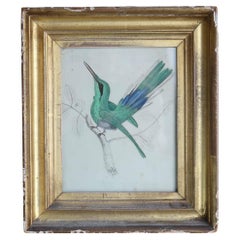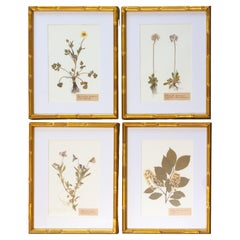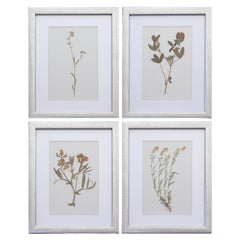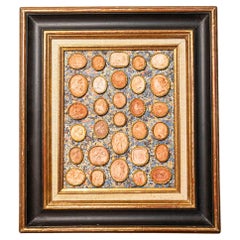Gilt Decorative Art
1840s English Folk Art Antique Gilt Decorative Art
Paper, Giltwood
1910s Swedish Vintage Gilt Decorative Art
Linen, Cut Glass, Wood, Giltwood
1910s Swedish Vintage Gilt Decorative Art
Wood, Giltwood, Paper
Late 17th Century Italian Baroque Antique Gilt Decorative Art
Wood
19th Century French Neoclassical Antique Gilt Decorative Art
Metal
Mid-20th Century American Mid-Century Modern Gilt Decorative Art
Paint, Wood
Early 2000s French Art Deco Gilt Decorative Art
Plaster
1910s Swedish Vintage Gilt Decorative Art
Linen, Cut Glass, Wood, Giltwood
21st Century and Contemporary French Art Deco Gilt Decorative Art
Plaster
Late 17th Century Portuguese Baroque Antique Gilt Decorative Art
Pine, Giltwood
19th Century Chinese Ming Antique Gilt Decorative Art
Silk, Wood, Paint
1910s Italian Baroque Vintage Gilt Decorative Art
Canvas, Giltwood
19th Century French Rococo Revival Antique Gilt Decorative Art
Canvas, Giltwood
Late 19th Century German Baroque Antique Gilt Decorative Art
Gesso, Canvas, Wood
Mid-20th Century American Brutalist Gilt Decorative Art
Iron
Early 1900s Italian Baroque Antique Gilt Decorative Art
Canvas, Giltwood
Late 18th Century French Chinoiserie Antique Gilt Decorative Art
Canvas, Giltwood
18th Century Italian Rococo Antique Gilt Decorative Art
Gold Leaf
17th Century Peruvian Antique Gilt Decorative Art
Wood, Paint, Giltwood
19th Century French Napoleon III Antique Gilt Decorative Art
Wood
20th Century Italian Mid-Century Modern Gilt Decorative Art
Wood
18th Century Italian Rococo Antique Gilt Decorative Art
Gold Leaf
Early 20th Century European Arts and Crafts Gilt Decorative Art
Majolica, Mirror, Oak
Mid-20th Century Italian Baroque Gilt Decorative Art
Wood
Early 1800s Italian Renaissance Antique Gilt Decorative Art
Wood, Gesso, Canvas
Early 19th Century American Regency Antique Gilt Decorative Art
Giltwood, Paper
Late 18th Century Swedish Gustavian Antique Gilt Decorative Art
Mirror, Pine, Giltwood
Early 19th Century French Empire Antique Gilt Decorative Art
Fruitwood
19th Century Italian Other Antique Gilt Decorative Art
Gesso, Canvas, Wood
19th Century Italian Baroque Antique Gilt Decorative Art
Gesso, Canvas, Wood
Early 1900s Italian Baroque Antique Gilt Decorative Art
Canvas, Giltwood
19th Century French Antique Gilt Decorative Art
Wood, Giltwood, Lacquer
Early 20th Century Spanish Moorish Gilt Decorative Art
Alabaster
18th Century and Earlier Italian Renaissance Antique Gilt Decorative Art
Gold Leaf
Early 19th Century Italian Empire Antique Gilt Decorative Art
Bronze, Ormolu
Mid-20th Century French Empire Gilt Decorative Art
Wood, Paint, Paper, Giltwood
Late 17th Century Portuguese Baroque Antique Gilt Decorative Art
Pine
Mid-20th Century French Mid-Century Modern Gilt Decorative Art
Iron
18th Century French Antique Gilt Decorative Art
Canvas, Wood, Paint
Late 19th Century Italian Baroque Revival Antique Gilt Decorative Art
Canvas, Wood
19th Century Antique Gilt Decorative Art
Wood
1880s European Arts and Crafts Antique Gilt Decorative Art
Gold, Bronze
1860s English William IV Antique Gilt Decorative Art
Canvas, Wood, Giltwood, Paint
Mid-19th Century Italian Rococo Revival Antique Gilt Decorative Art
Metal
Late 18th Century French Directoire Antique Gilt Decorative Art
Wood, Paint
Mid-20th Century French Empire Gilt Decorative Art
Wood, Giltwood, Paper
19th Century Chinese Antique Gilt Decorative Art
Mirror, Wood
20th Century Spanish Mid-Century Modern Gilt Decorative Art
Metal, Iron, Gold Leaf
Mid-18th Century Italian Rococo Antique Gilt Decorative Art
Gold Leaf
18th Century Italian Antique Gilt Decorative Art
Wood, Giltwood
1940s Chinese Hollywood Regency Vintage Gilt Decorative Art
Wood
Late 19th Century German Rococo Revival Antique Gilt Decorative Art
Canvas, Wood
1880s Indian Other Antique Gilt Decorative Art
Gold, Silver
18th Century Italian Rococo Antique Gilt Decorative Art
Gold Leaf
19th Century French Rococo Antique Gilt Decorative Art
Masonite, Gesso, Canvas, Giltwood
19th Century French Louis XVI Antique Gilt Decorative Art
Bronze
18th Century Dutch Baroque Antique Gilt Decorative Art
Paper, Boxwood, Paint
Mid-18th Century Spanish Antique Gilt Decorative Art
Chestnut
Early 20th Century Burmese Art Deco Gilt Decorative Art
Wood, Giltwood
1890s English Late Victorian Antique Gilt Decorative Art
Canvas, Wood, Giltwood
Read More
At Colonial Williamsburg, Everything Old Is New Again
With the help of a new director, the Virginia institution's folk art and decorative arts museums are undergoing extensive upgrades.
New York’s Hirschl & Adler Showcases the American Workmanship and Design Panache of Neoclassical Treasures
The gallery's latest exhibition proves that museum-quality pieces entice and inspire, whether in traditional or more modern interiors.





